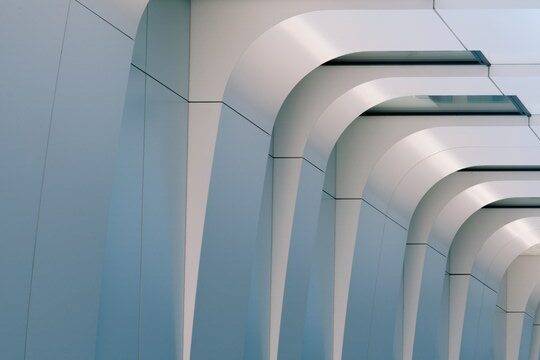Capturing Every Angle: The Revolution of 360-Degree Cameras

Introduction:
In the realm of modern construction, the quest for innovative materials that marry strength, versatility, and sustainability is a constant pursuit. Enter GFRG, a trailblazer in the construction industry that seamlessly blends the robust properties of glass fibers with the versatility of gypsum. In this blog, we explore the wonders of Glass Fiber Reinforced Gypsum (GFRG) and how it is transforming the way we build sustainable structures.
Unveiling GFRG (Glass Fiber Reinforced Gypsum):
GFRG, or Glass Fiber Reinforced Gypsum, is a composite material that combines gypsum plaster with glass fibers. This dynamic fusion results in a lightweight yet durable material that has gained widespread recognition in the construction industry. GFRG finds its roots in the architectural and interior design realm, providing architects and builders with a unique set of advantages for both aesthetic and structural applications.
Key Characteristics of GFRG (Glass Fiber Reinforced Gypsum):
Lightweight Nature:
GFRG’s composition imparts a remarkable lightweight quality to the material, making it an ideal choice for applications where reducing structural load is crucial. This characteristic not only facilitates easier handling during construction but also contributes to energy-efficient structures.
High Strength-to-Weight Ratio:
The incorporation of glass fibers enhances the structural strength of gypsum, resulting in a high strength-to-weight ratio. This makes GFRG an excellent choice for creating intricate designs and architectural elements without compromising on durability.
Fire Resistance:
Gypsum, a key component of GFRG, is inherently fire-resistant. When combined with glass fibers, GFRG becomes a material that not only withstands high temperatures but also contributes to the fire safety of structures, making it suitable for a wide range of applications.
Design Flexibility:
GFRG offers unparalleled design flexibility. Its moldable nature allows for the creation of intricate and detailed architectural elements, from ornate moldings to decorative panels. This flexibility empowers architects to bring their creative visions to life.
Sustainability Credentials:
The use of gypsum, a naturally occurring mineral, aligns with sustainability goals in construction. Additionally, the lightweight nature of GFRG contributes to reduced transportation energy and facilitates energy-efficient buildings.
Advantages of GFRG:
Cost-Efficiency:
GFRG’s lightweight nature translates into cost savings in terms of transportation, handling, and installation. Its moldability also reduces the need for extensive labor during the construction process.
Durability and Longevity:
The combination of gypsum and glass fibers results in a durable material that withstands the test of time. GFRG components contribute to the longevity and resilience of structures.
Aesthetic Versatility:
Architects appreciate the design versatility offered by GFRG. Its moldable nature allows for the creation of both classic and contemporary designs, providing a canvas for architectural creativity.
Future of GFRG (Glass Fiber Reinforced Gypsum):
As the construction industry continues to prioritize sustainability, the future of GFRG looks promising. Its unique combination of lightweight properties, design flexibility, and environmental sustainability positions GFRG as a material that will play a significant role in shaping the structures of tomorrow.
Read more from our latest study on GFRG (Glass Fiber Reinforced Gypsum) Market Based On Type, Application, End-User, And Region – Global Forecast Up To 2030.
Conclusion:
In the dynamic landscape of construction materials, GFRG stands out as a beacon of innovation, seamlessly combining the strength of glass fibers with the versatility of gypsum. From ornate architectural details to sustainable building solutions, GFRG is proving to be a transformative force in the quest for smarter, more resilient, and aesthetically pleasing structures. As architects and builders continue to explore the potential of this remarkable material, GFRG is set to leave an indelible mark on the future of construction.
– Analyst Team
IHR Insights
inquiry@ihrinsights.com

